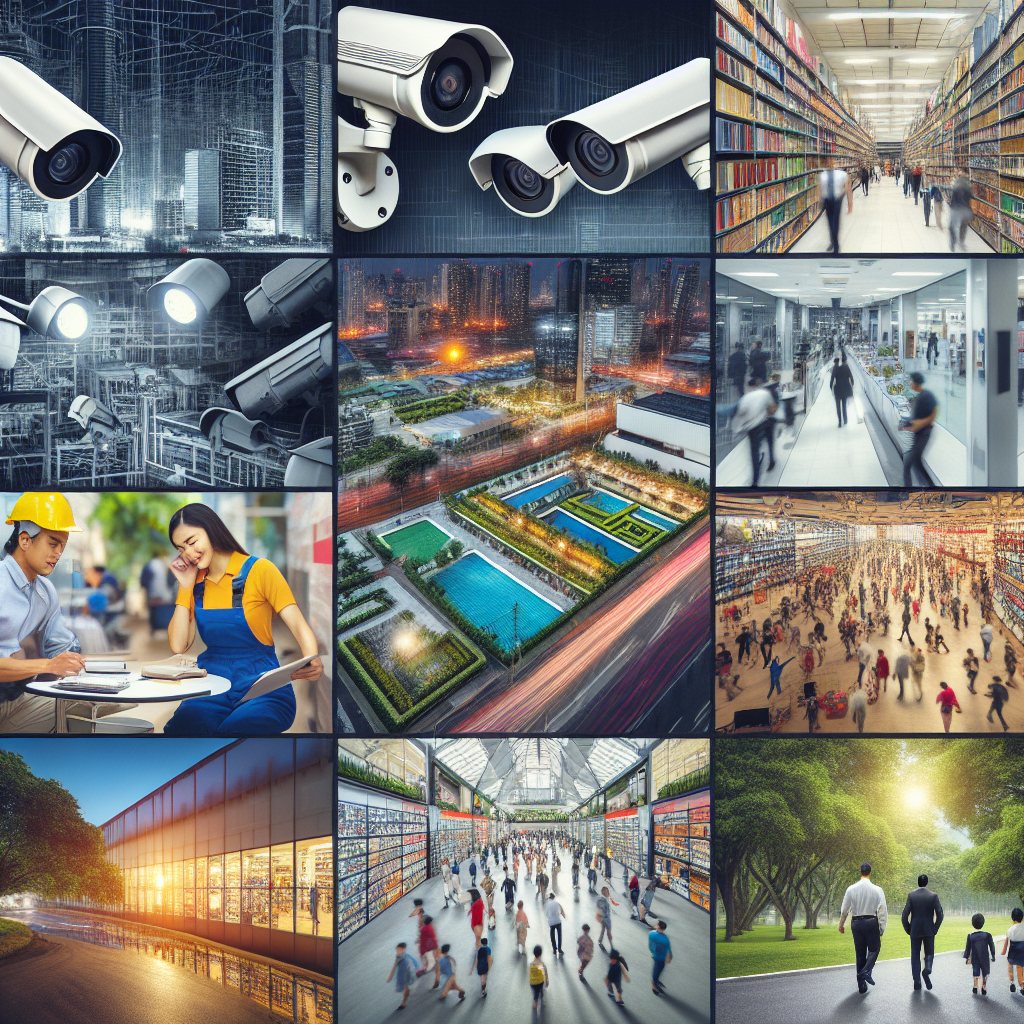In today’s technologically advanced world, video surveillance has evolved into a key asset for businesses, organizations, and public spaces. Initially used primarily for security purposes, video surveillance systems now provide valuable insights into various operational areas, enhancing safety, efficiency, and customer experience. This article examines several case studies that highlight successful implementations of video surveillance across various industries.
1. Retail Industry: Walmart
Overview
Walmart, one of the largest retail chains globally, faces significant losses due to theft and inventory shrinkage. In response, they implemented advanced video surveillance systems across their stores.
Implementation
Walmart installed high-resolution cameras equipped with facial recognition technology and motion-detecting capabilities. These cameras were strategically placed in high-risk areas, including entrances, exits, and checkout counters.
Results
After deploying the new video surveillance system, Walmart reported a 20% decrease in theft incidents within the first year. Furthermore, the cameras helped optimize staffing levels during peak shopping hours by analyzing customer foot traffic patterns. The insights gleaned from the video analytics also informed merchandising strategies, leading to a 5% increase in sales.
2. Transportation Sector: London Underground
Overview
The London Underground is one of the busiest metro systems in the world. To enhance passenger safety and ensure timely communication, Transport for London (TfL) integrated a comprehensive video surveillance system.
Implementation
TfL installed thousands of high-definition CCTV cameras throughout the network. These cameras not only monitored train platforms and waiting areas but also focused on high-traffic routes. The video feeds were integrated with a centralized control room, enabling real-time alerts for incidents.
Results
The implementation of this system led to a significant reduction in crime rates, with a 30% decrease in incidents across the network. The footage from the cameras was also instrumental in accident investigations and enforcing safety measures, which helped in improving the overall travel experience.
3. Healthcare: Hospitals
Overview
Healthcare facilities are challenging environments for maintaining patient safety and security. A chain of hospitals in the United States decided to modernize their surveillance systems to enhance security and mitigate potential risks.
Implementation
The hospitals adopted a video surveillance solution that included both indoor and outdoor cameras. They employed advanced analytics software to monitor patient rooms, waiting areas, and parking lots, with an emphasis on privacy compliance.
Results
The hospitals observed a 40% reduction in incidents of patient aggression and theft. The video analytics helped staff identify trends in patient behavior, enabling proactive measures to ensure safety. Additionally, the surveillance system improved response times to emergencies and enhanced overall patient satisfaction ratings.
4. Education: University Campuses
Overview
A large university implemented a video surveillance system to enhance campus safety and deter criminal activity. Concerns from students and their families about safety prompted this decision.
Implementation
The university deployed a network of high-definition cameras across key areas, such as dormitories, libraries, and outdoor spaces. The system included features like motion detection, night vision, and remote access for campus security personnel.
Results
The implementation led to a 50% reduction in reported campus crimes. The video surveillance system provided the security team with valuable information during investigations and significantly improved the sense of safety among students. Moreover, it fostered a positive campus environment, encouraging student engagement and participation.
5. Manufacturing: Siemens
Overview
Siemens, a global technology company, oversees complex manufacturing operations. To improve operational efficiency and safety, they recognized the need for a robust video surveillance system.
Implementation
Siemens installed cameras in various manufacturing areas, including assembly lines and raw material storage. These cameras not only monitored security but also integrated with production monitoring systems.
Results
The integration of video surveillance with production systems led to a 15% increase in operational efficiency. By identifying bottlenecks and safety hazards through video analytics, Siemens was able to implement timely corrective actions. The surveillance also helped reduce workplace accidents, contributing to lower insurance premiums.
Conclusion
Video surveillance systems have proven their effectiveness across a multitude of industries, not just as a security measure but as a crucial operational tool. From retail environments to healthcare facilities, the benefits of these systems extend far beyond loss prevention. Businesses that harness the potential of video surveillance benefit from enhanced safety, improved operational efficiency, and better customer experiences.
FAQs
Q1: What are the primary benefits of implementing video surveillance in a business?
A1: The primary benefits include enhanced security, reduced theft and crime, increased operational efficiency, improved customer experience, and valuable insights through analytics.
Q2: Are there privacy concerns associated with video surveillance?
A2: Yes, privacy concerns are valid. Businesses must ensure compliance with local laws and regulations. It’s crucial to inform employees and customers about surveillance and how footage will be used.
Q3: How does video analytics work?
A3: Video analytics software processes video feeds to identify patterns and anomalies. It can detect movement, recognize faces, and generate alerts based on predefined criteria, such as unauthorized access.
Q4: How much does it cost to implement a video surveillance system?
A4: Costs vary significantly based on the size of the area to be monitored, the type and number of cameras, installation, and ongoing maintenance. A comprehensive quote can provide better insights.
Q5: Can video surveillance systems integrate with other security systems?
A5: Yes, modern video surveillance systems can integrate with alarm systems, access control systems, and other security measures to provide a more comprehensive safety solution.
With the ongoing advancements in technology, the future of video surveillance looks bright, providing even more opportunities for businesses to improve security and efficiency. As industries continue to embrace these systems, case studies like the ones mentioned will serve as valuable learning experiences for future implementations.


